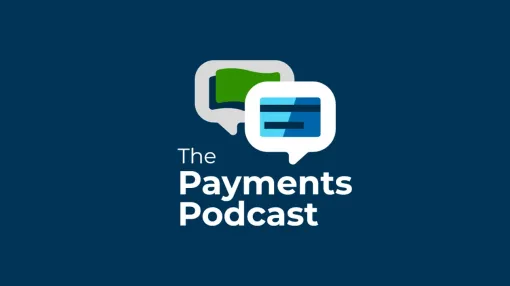There was a time not too long ago when the future of work was a truly foreboding concept. As robotics and artificial intelligence moved from science fiction to workplace reality around 2015, organizations from the World Economic Forum to the Aspen Institute set out to quantify and qualify potential consequences. Most portrayed a specter of automation with fleets of robots and AI-created processes causing mass unemployment and creating an existential crisis for the global workforce. This 2017 quote from a consumer interview conducted for a PwC report on the future of work samples the attitude at that time: “Automation, machines are replacing so many jobs. Many people think that only the poor and uneducated are being displaced. I’m afraid that in a few years, everyone will be replaceable.”
Those fears have thankfully not come to pass. The future of work that caused so much consternation among everyone, from consumers to consultancies even as recently as 2019, has been replaced by a more balanced, even optimistic approach. Instead, the focus has moved almost exclusively from the future of work to the future of the workforce. And with that focus, three issues form the intersection of the current state of the business payments workforce and its future: automation, data and fraud prevention.
First, let’s look at automation. It has become clear that process improvements like Accounts Payable (AP) automation, customer relationship management, inventory planning and operational management have become the reality, not the nightmare. AP automation, for example, has now reached the point where 70% of large businesses make more than 50% of their payments electronically, according to the 2022 Bottomline B2B Payments Survey. Yet the Bureau Of Labor Statistics shows that the accounting and auditing sector expects to add jobs at a six per cent clip for the next seven years.
AI AND BUSINESS PAYMENTS
If robots were deemed the frightening face of automation, AI is undoubtedly the scary face (and voice) of data. Here again, the hype of destruction has yet to live up to reality. AI has taken on a bit of a carnival sideshow status lately with its ability to create deep fakes (comical in some ways, illegal in others) and create search functionality that goes beyond simple keywords. Anyone following the saga of ChatGPT and Google Sparrow knows that anyone could type in “what is the future of work” and get an answer that outperforms simple search engine functionality. But AI in the context of business payments has only scratched the surface of far more useful and valuable applications. It is already changing commercial banking by expediting credit and loan decisions, serving the most relevant products to clients and even informing user experience design.
By changing the data equation AI also changes how the workforce will approach their jobs. Like AP automation, it will decrease the number of manual processes needed to manage customer data, extend loans, onboard new customers and calculate customer lifetime value. According to MITs 2020 “Artificial Intelligence and the Future of Work” it worked with a large commercial bank that took a customer sample of its credit card customers intending to predict payment delinquencies. Credit scores usually get this done with a minimum of manual effort. By integrating AI, it added different variables to the credit score, which predicted delinquencies more accurately.
It's no secret that one of the priorities of the workforce, especially its younger segments, has been the environment. Deutsche Bank has been using AI to combine the EU regulations for wind and solar power financing with the number of transactions necessary for businesses to qualify for ESG funding. “Until now, this customer data has had to be examined individually by advisors,” said Murat Cavus, who is developing new technologies to support Deutsche Bank's sustainability efforts. In the future, machine learning can help classify deals as green. The algorithm then makes a pre-selection, completing a process it calls autoclassification. “With autoclassification, we would take an enormous amount of work off our customer advisors,” Cavus said.
FRAUD PRESSURE
So, the future of work has become the future of the workforce. The workforce, unfortunately, has become harder to pin down. Insider fraud, which has necessitated insider risk management, is arguably the biggest challenge of the hybrid workforce. In fact, many companies see it as the most potentially destructive factor at play in the next few years. For example, many things might motivate bad insider behavior—personal economic hardship or a desire to avenge, for example. Insiders may operate alone or conspire with others. Actions might be deliberate or accidental. Whatever the case, the potential for access misuse, data leak or theft, or misappropriated funds is a real and growing concern. In Experian’s annual “Future of Fraud” report for 2023, workplace fraud take two of the five top spots.
Current thinking says the hybrid work model will stay in some shape or form. As noted in a recent Deloitte report, two-thirds of workers globally (64%) say they have already considered (or would consider) looking for a new job if their employer wanted them back in the office full time.” So, let’s assume the workforce is at least partially remote. The next issue to tackle is the detection and prevention of insider fraud, and here automated insider risk management can be extremely effective. By accessing the application layer, which sits between the application server and the employee, technology can detect inconsistent access patterns, data manipulation, or data leakage that may indicate insider fraud at the beginning rather than the end.
Application layer monitoring technology also works in a hybrid environment, i.e., across different applications regardless of their technology (e.g., web-based or mainframe). It is anonymous by nature and will not divulge names or identifying data (such as usernames or passwords of employees).
But that’s not to say the future of the workforce is about a lack of trust. Detecting criminal activity is ethical and legal and does not have to create a culture of fear. As stated by the UK data privacy advocate Information Commissioner’s Office: “Any decision to monitor workers should involve a careful balancing between the business interests of an employer and the workforce’s rights and freedoms in relation to their personal data.”
The Bottomline: Automation, data and fraud. They exist independently as well as interdependently. In the context of financial services and business payments, they form the triumvirate of issues that will determine the efficiency and satisfaction of your workforce as they navigate their personal economics and your economic success.


